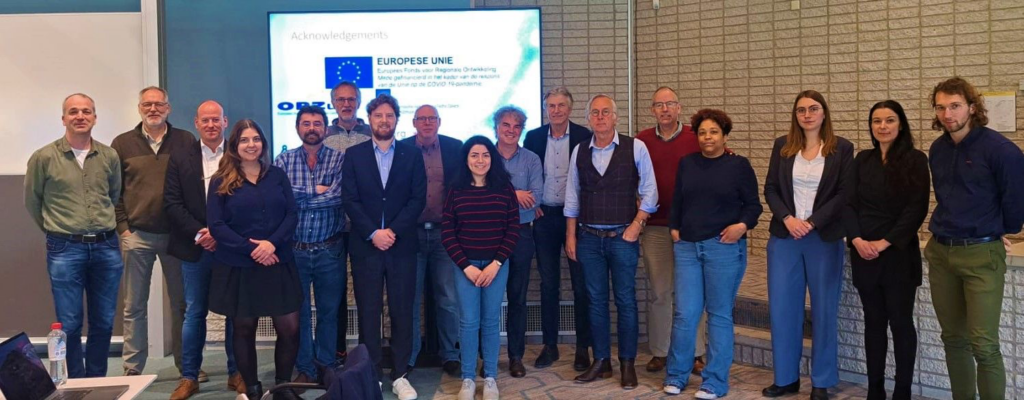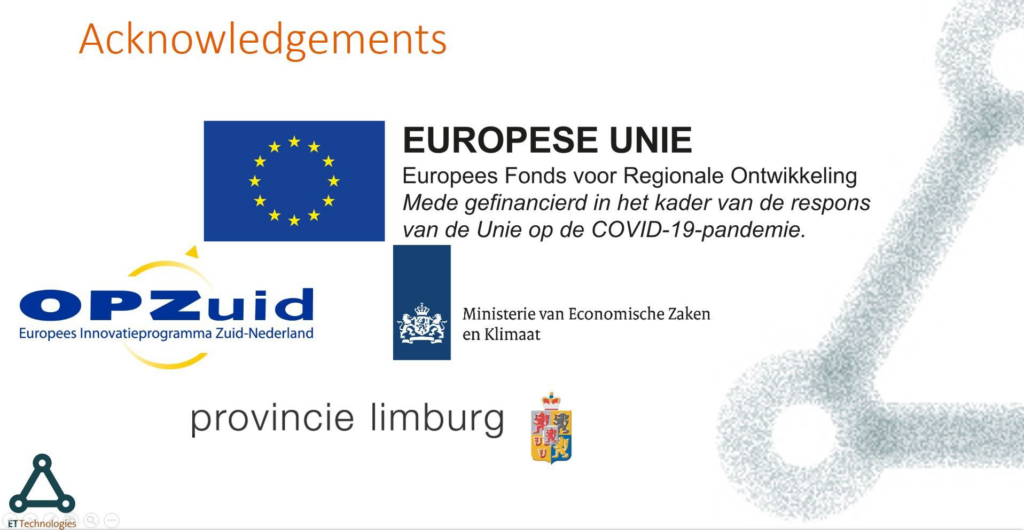Innoseis Sensor Technologies COO Matthijs Heeres presented some of our latest developments on inertial sensing at the Einstein Telescope Technologies meeting. Within this project, we are one of the 12 companies and institutes working together to develop groundbreaking technologies, subsurface investigations, and technology spin-offs to other sectors.

ETT
The Einstein Telescope (ET) is an upcoming underground observatory designed to detect gravitational waves. The Meuse-Rhine Euregion, which borders the Netherlands, Belgium, and Germany, is being considered as a possible location for the project. The project “Einstein Telescope Technologies” (ETT) is aimed at realizing the ET. A consortium of 12 knowledge institutions and companies collaborate within the project to develop the required groundbreaking technologies, subsurface investigations, and technology spin-offs to other sectors. The project complements other research and work in projects such as ETpathfinder, E-TEST, and ET2SMEs.
Technical Challenges
Several technical challenges need to be overcome to realize the ET. These include vibration-free cooling, improved sensors, new algorithms to isolate gravitational wave signals from noise, and the realization of the world’s largest ultra-high vacuum system. It is also essential to characterize the subsurface properly to determine the optimal installation for the Einstein Telescope. Furthermore, the project aims to investigate how the Einstein Telescope can be built and used in the most sustainable way possible. The ETT project aims to address all these aspects.
Spin-Offs Beyond the Horizon
The work packages of the ETT project not only contribute directly to the Einstein Telescope but also have potential applications in other areas. For example, the corrections derived from Einstein’s general theory of relativity are used in satellite navigation systems. This project aims to generate technological spin-offs and position the Dutch industry optimally for ET-related orders. Collaboration with various leading Dutch companies is also promoted.
Leading through Innovation
Apart from developing the necessary technology for the ET and generating technological spin-offs, the ETT project also aims to position the Dutch industry optimally for ET-related orders. Even if the ET is not realized in the Meuse-Rhine Euregion, these parties will obtain a better starting position for future ET-related tenders. By intensifying collaboration with the Dutch business sector, the case for the ET in the Meuse-Rhine Euregion is strengthened. This will enable the Netherlands to position itself better in realizing a world-class scientific infrastructure within its borders, with all the related positive impacts on the region.
About the Einstein Telescope
Gravitational waves were first detected on Earth in 2015 using two laser interferometers. Dozens of gravitational waves have been observed since then, providing a new way to study our universe. Gravitational waves offer enormous discovery potential for phenomena that cannot be investigated with light. Despite the revolutionary initial observations, the current observatories are not sensitive enough to detect gravitational waves throughout the entire history of our universe. To achieve this, a better instrument is needed: the Einstein Telescope (ET).
source: https://et-technologies.nl/project-omschrijving/
